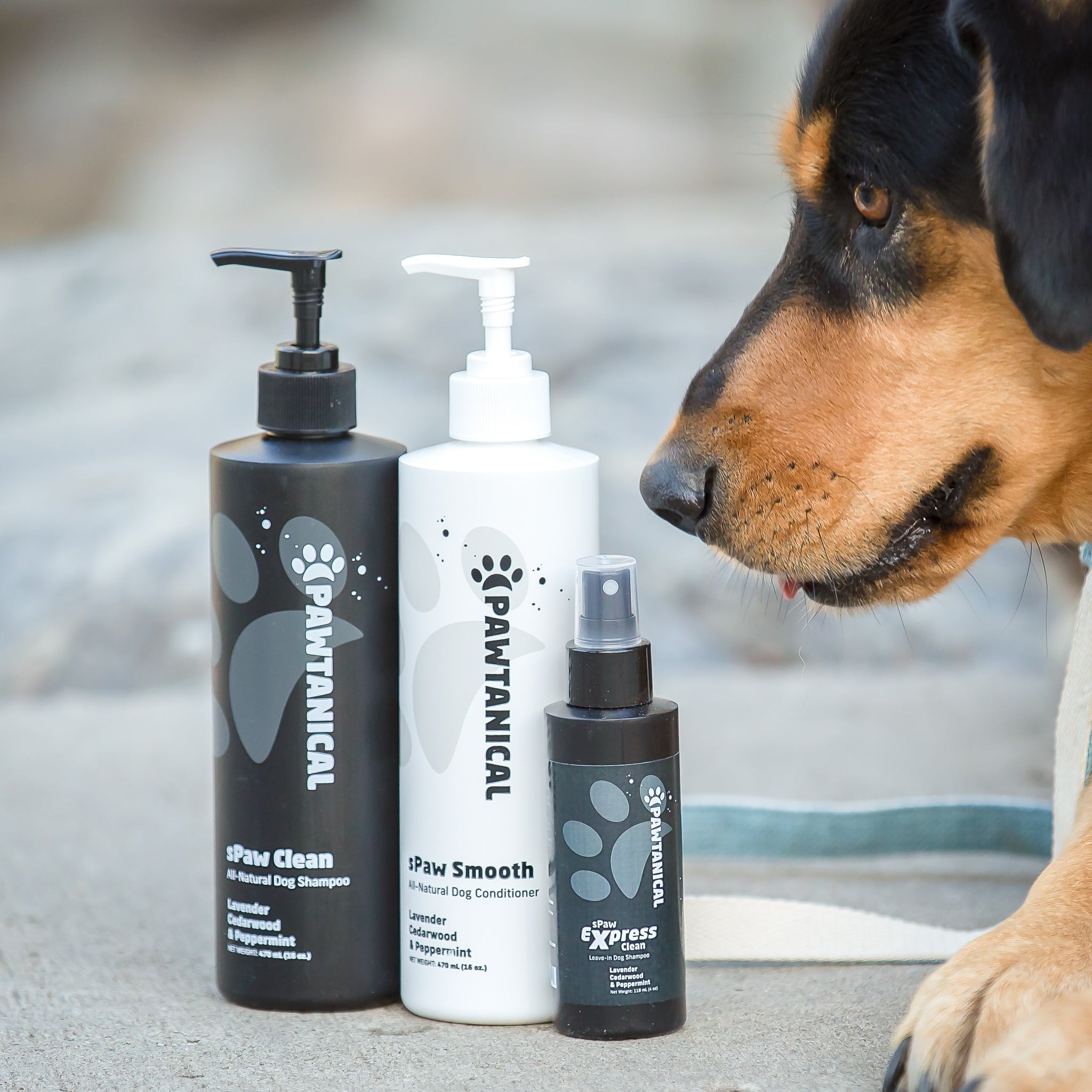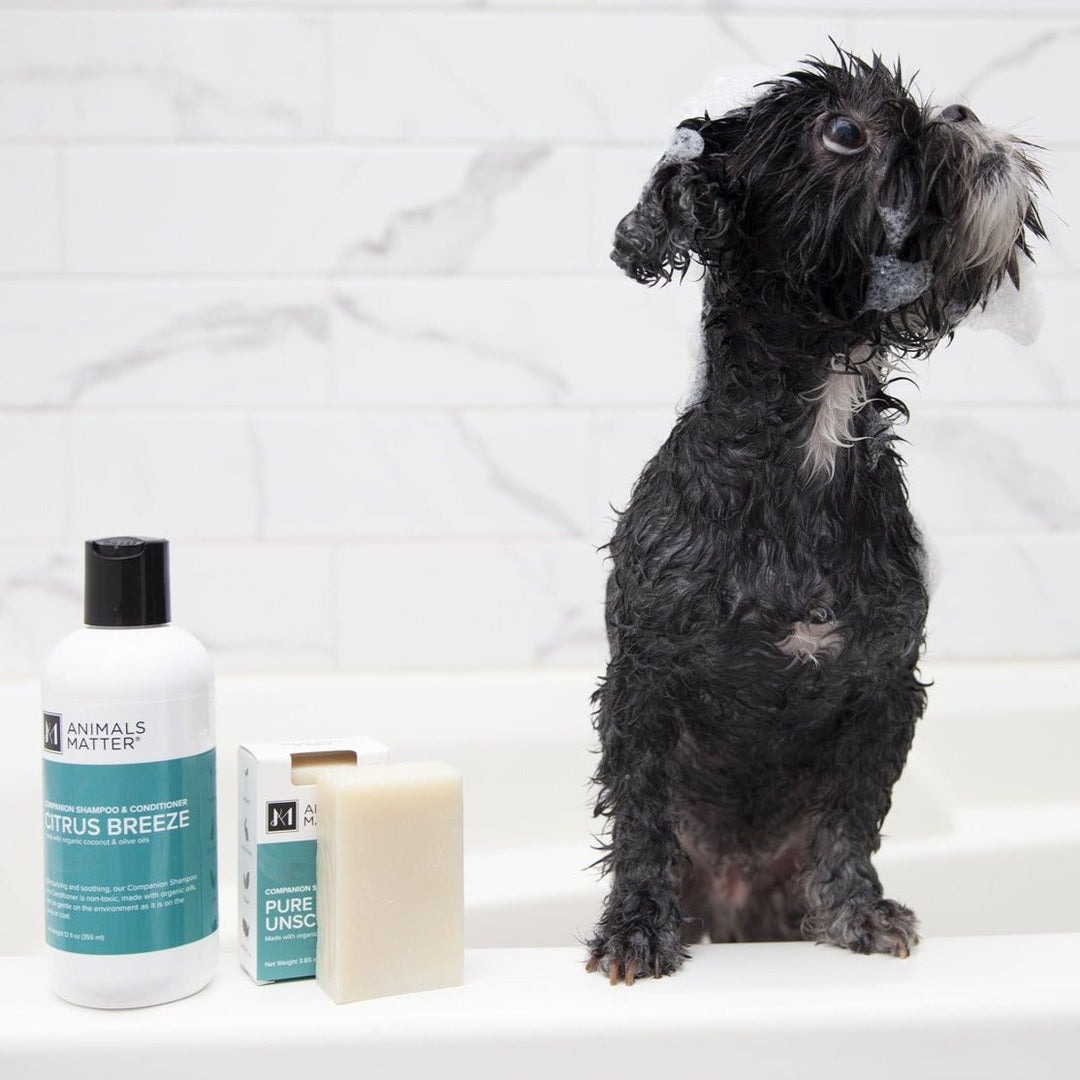The Importance of Choosing the Right Shampoo for Your Dog
Selecting the appropriate dog shampoo and conditioner is not merely about cleanliness. It contributes significantly to your pet’s skin health and overall wellbeing. A good match helps prevent skin irritations and maintains fur softness. With the variety of products available, identifying the right choice can be daunting.
Start by understanding your dog’s skin. Some dogs have sensitive skin that requires gentle formulations. Others may need medicated options for specific skin conditions. The key is to recognize the signs your dog shows after a bath with a particular shampoo. Signs of comfort suggest a good fit, while scratching or discomfort may indicate a poor match.
Moreover, the pH levels of a dog’s skin differ from humans. This means that human shampoos are generally unsuitable for dogs and can lead to dryness and irritation. Dog-specific formulations are crafted to align with canine skin pH levels, promoting health and preventing problems.
Lastly, the environment plays a role too. Dogs exposed to harsh outdoor conditions may need shampoos that provide extra moisturizing effects. Meanwhile, indoor pets might need milder formulas. Take these factors into account when selecting dog shampoo and conditioner, to ensure the healthiest skin and coat for your canine companion.
Key Ingredients to Look for in Soothing Formulas
When selecting a dog shampoo and conditioner, focus on key ingredients that offer soothing effects. Here are essential components you should look for:
- Aloe Vera: A natural healer, aloe vera soothes skin and reduces irritation.
- Oatmeal: Known for its calming properties, oatmeal relieves itching and inflammation.
- Vitamin E: This antioxidant promotes skin health and acts as a moisturizer.
- Chamomile: Chamomile soothes sensitive skin and adds a gentle fragrance.
- Shea Butter: It hydrates dry skin and enhances fur softness.
Ingredients avoid harsh chemicals that can strip natural oils from your dog’s skin. Instead, opt for natural, gentle components. Essential oils like lavender or eucalyptus may also add soothing effects and a pleasant smell. Yet, ensure they are safe and diluted for pet use. Balanced pH levels are a must in any dog shampoo and conditioner to match your dog’s skin. Avoid artificial colors and fragrances, as these can cause allergic reactions.
Your dog’s comfort during and after a bath largely depends on these ingredients. A well-chosen product with the right ingredients can make bath time a soothing experience for your pet.
Top Benefits of Using Conditioners for Dogs

When it comes to grooming, not only does dog shampoo play a vital role, but conditioners also bring several benefits to a dog’s skin and coat health. Introducing a conditioner to your dog’s bath routine can provide top benefits that enhance their well-being and appearance. Here are some advantages to consider:
- Hydrates the skin: Conditioners lock in moisture, preventing dryness and ensuring supple skin for your furry friend.
- Detangles fur: A smooth coat is easier to brush, reducing discomfort during grooming sessions.
- Enhances shine: Regular use of conditioner can give your dog’s coat a lustrous and healthy glow.
- Soothes irritation: Ingredients in conditioners often have soothing properties to help calm irritated skin.
- Protects from damage: Conditioning coats can help shield against environmental damage such as sun and wind.
Incorporating a suitable dog shampoo and conditioner into your pet’s grooming routine can significantly contribute to their comfort and health. As you choose a conditioner, remember to check for the gentle, natural ingredients that mesh well with your dog’s needs, similar to selecting a shampoo. By doing this, you ensure your dog not only looks great but feels great too.
Homemade vs. Commercial Dog Shampoos and Conditioners
When considering the best care for your dog’s coat, you must choose between homemade and commercial products. Here are key points to help you decide:
- Customization: Homemade shampoos allow customization to your dog’s specific needs. You can add ingredients known to soothe your dog’s skin. However, it requires knowledge of safe concentrations.
- Cost-effectiveness: Making your own dog shampoo and conditioner can be less expensive. You control the cost by selecting ingredients that fit your budget.
- Natural Ingredients: Both homemade and commercial options can contain natural ingredients. But with homemade concoctions, you ensure the absence of unwanted chemicals.
- Convenience: Commercial dog shampoos and conditioners offer convenience. They’re readily available and expertly formulated to meet safety standards.
- Consistency: Commercial products provide consistent results. Manufacturers follow strict recipes, unlike homemade mixtures subject to variations.
- Safety: Store-bought shampoos and conditioners undergo testing to ensure they’re safe for pets. With homemade products, there’s a risk of incorrect dosages and reactions.
Evaluate your dog’s needs, your time, and resources to decide on the best option. Remember, your dog’s comfort and health come first, whether you choose homemade or commercial products.
How to Properly Bathe Your Dog with Soothing Shampoos

Bathing your dog is more than just a rinse-off. It’s a ritual that demands careful execution with the right dog shampoo and conditioner. Here’s a simple guide to ensure you bathe your dog correctly while providing a soothing experience:
- Prep Your Dog: Before bathing, gently brush your dog’s fur. This removes loose hair and detangles the coat. It makes the bathing process smoother.
- Use Lukewarm Water: Dogs are sensitive to temperature. Always use lukewarm water to avoid shocking your pet’s system.
- Apply Shampoo Gently: Pour the shampoo on your dog’s back. Massage it in with circular motions. Don’t forget the legs, tail, and belly. Use a damp cloth for the face to keep shampoo out of their eyes and nose.
- Rinse Thoroughly: Rinse until the water runs clear. Shampoo residue can cause irritation and discomfort. So it’s critical to rinse every trace of soap off your dog’s coat.
- Condition the Coat: After rinsing, apply a dog-specific conditioner. This helps hydrate the skin and fur. Ensure even coverage and let it sit for a few minutes before rinsing.
- Dry Gently: Post-bath, wrap your dog in a towel and pat dry. Avoid rubbing to minimize frizz and tangles. If your dog tolerates it, use a hairdryer on a low, cool setting.
- Reward Your Pet: After a calm bath, offer your dog a treat. This helps associate bath time with positive experiences for your dog.
Remember, the goal is not just cleanliness, but also to make bath time a soothing and pleasant activity for your furry friend. Use dog shampoo and conditioner that contain calming ingredients like aloe vera or oatmeal, and always check for balanced pH levels suited for dogs. This care routine promotes healthy skin, a shiny coat, and happy bath time memories.
Dogs, like humans, can face various skin conditions that may cause discomfort or require special care. When choosing a dog shampoo and conditioner, it is vital to consider these skin issues. Below, we explore common skin conditions in dogs and how to address them with suitable products.
- Allergies: Dogs can have allergies to food, the environment, or fleas. Look for hypoallergenic shampoos that are free of common irritants.
- Dry Skin: If your dog has dry, flaky skin, moisturizing formulas with ingredients like aloe vera or shea butter can help restore their skin’s hydration.
- Hot Spots: These are inflamed, infected areas often caused by excessive licking or scratching. Medicated shampoos with antibacterial properties can assist in healing.
- Parasites: Shampoos with natural pest deterrents can help fend off fleas and ticks.
- Yeast Infections: Antifungal shampoos are necessary for dogs suffering from yeast overgrowth on their skin.
In addition to using the right dog shampoo and conditioner, regular grooming and veterinary checks are important. They help you spot and treat skin conditions early. If your dog shows signs of skin distress, consult your vet for a specific diagnosis and treatment plan. Remember that the right care can greatly improve your dog’s quality of life.
Recommendations for Sensitive Skin and Puppies

When caring for dogs with sensitive skin or puppies, special consideration is crucial. Their delicate skin requires shampoos and conditioners that are gentle and free from harsh chemicals. Here are some recommendations to keep in mind:
- Choose Hypoallergenic Products: Look for products labeled ‘hypoallergenic’. They are less likely to cause allergic reactions.
- Go for Fragrance-Free: Shampoos without added fragrances are better for sensitive noses and skin.
- Opt for Natural Ingredients: Natural ingredients like aloe vera and oatmeal provide soothing comfort without irritation.
- Consult Your Vet: Before trying new products, ask your vet. They can recommend products safe for young or sensitive dogs.
- Patch Test: Apply shampoo on a small skin area first. Watch for any adverse reactions over 24 hours.
- Gentle Application: When bathing, be gentle. Avoid vigorous scrubbing which can aggravate sensitive skin.
- Avoid Over-Bathing: Bathing too often can strip natural oils. Stick to baths when necessary to avoid drying out sensitive skin.
- Use a Soft Towel: After bathing, pat your dog gently. Use a soft towel to avoid irritating their skin.
Sensitive skin and puppies need tender care. The right dog shampoo and conditioner can ensure their skin stays healthy and irritation-free. Always review ingredients and follow the advice of your vet. With the right care, your dog can enjoy bath time without discomfort.
Tips for Maintaining a Healthy Coat Between Baths
Maintaining your dog’s coat between baths is vital for their skin and fur health. Here are some straightforward tips to keep your dog’s coat shiny and healthy:
- Regular Brushing: Brush your dog’s fur often. This spreads natural oils and removes dirt.
- Healthy Diet: Give your dog a balanced diet. Foods rich in omega-3 fatty acids are great for a shiny coat.
- Wipe Your Dog Down: After walks, wipe your dog’s coat with a damp cloth. This removes any pollutants they picked up.
- Use Spritzers: If your dog’s coat gets dull, use a pet-safe spritzer for extra shine.
- Control Parasites: Keep up with flea and tick treatments. Parasites can damage skin and coat health.
- Avoid Over-Bathing: Only bathe your dog when needed. Too much bathing strips away essential oils.
- Check for Allergies: Be on the lookout for signs of allergies. They can cause skin and coat issues. Find and remove the allergen.
- Keep Them Dry: Make sure your dog is completely dry after a bath. Dampness can lead to skin infections.
- Monitor Skin Health: Watch for any skin changes. Contact your vet if you see problems.
These simple steps help you avoid skin problems and keep your dog’s coat in top condition. Bear in mind, a healthy coat starts with the right care inside and outside. By following these tips and choosing the right dog shampoo and conditioner, you’ll support your pet’s coat health every day.
